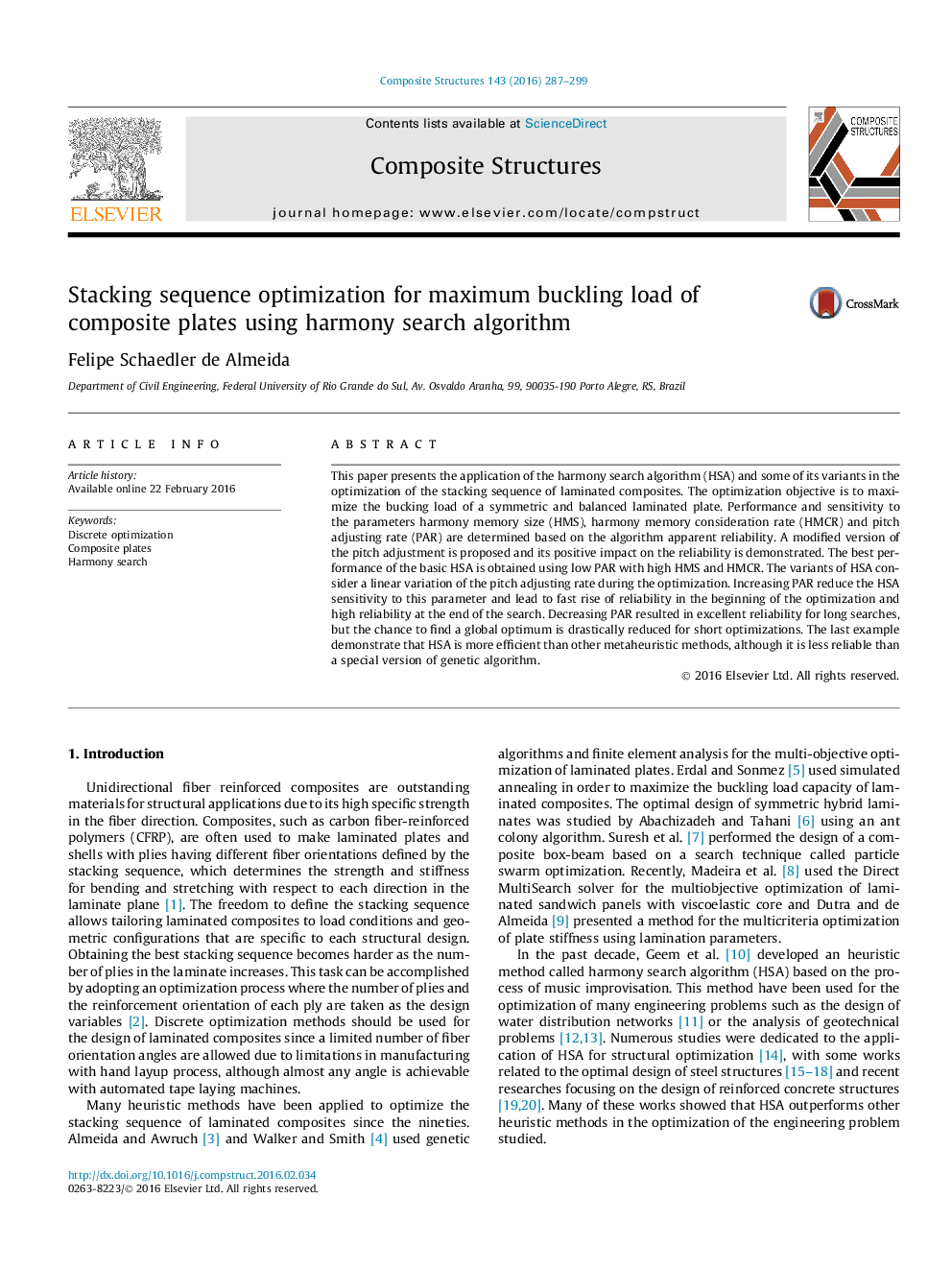| Article ID | Journal | Published Year | Pages | File Type |
|---|---|---|---|---|
| 6705794 | Composite Structures | 2016 | 13 Pages |
Abstract
This paper presents the application of the harmony search algorithm (HSA) and some of its variants in the optimization of the stacking sequence of laminated composites. The optimization objective is to maximize the bucking load of a symmetric and balanced laminated plate. Performance and sensitivity to the parameters harmony memory size (HMS), harmony memory consideration rate (HMCR) and pitch adjusting rate (PAR) are determined based on the algorithm apparent reliability. A modified version of the pitch adjustment is proposed and its positive impact on the reliability is demonstrated. The best performance of the basic HSA is obtained using low PAR with high HMS and HMCR. The variants of HSA consider a linear variation of the pitch adjusting rate during the optimization. Increasing PAR reduce the HSA sensitivity to this parameter and lead to fast rise of reliability in the beginning of the optimization and high reliability at the end of the search. Decreasing PAR resulted in excellent reliability for long searches, but the chance to find a global optimum is drastically reduced for short optimizations. The last example demonstrate that HSA is more efficient than other metaheuristic methods, although it is less reliable than a special version of genetic algorithm.
Related Topics
Physical Sciences and Engineering
Engineering
Civil and Structural Engineering
Authors
Felipe Schaedler de Almeida,
